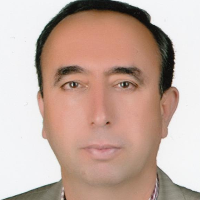Response of some Vegetative, Qualitative and Quantitative Traits of Grape Vine (Vitis vinifera L. Cv. Rishbaba) to Type of Color and Percentage of Shading in Netting System
Author(s):
Article Type:
Research/Original Article (دارای رتبه معتبر)
Abstract:
Introduction
Table grape is one of the most important horticultural crops in Fars province however in recent years climate change has caused negative effects on phenology and reduced the quantity and quality of its product. Around the world, shade net is used for a different of crops, from fruits and vegetables to nursery plants to protect against strong sunlight, wind, hail and bird injury. Shade net are commonly used in vineyards for early, late harvest, protection from hail, snow, storms, and the prevention of the negative effects of pests and diseases in many countries such as Japan, Thailand, Australia, Chile, the United States and Turkey. This study was conducted to investigate the effect of color type and shading percentage on some characteristics of grapes of Rishbaba cultivar in one of the vineyards of Kavar city in 2019. Materials and Methods
The experiment was performed as a factorial experiment based on randomized complete block design with 3 replications with canopy color factors (green, red and white) and shading percentage (30% and 50%) and without canopy (control). Kavar city is located 45 km southeast of the center of the province and has a longitude of 250 and 42 and a latitude of 290 and 11 ". The altitude is 1510 meters above sea level and the average rainfall is 290 mm, the average annual temperature is 22, the maximum temperature is 44 and the minimum temperature is minus 4 degrees Celsius. In this study, some characteristics of vegetative and biochemical traits such as shoot length, number of nodes, internode distance, leaf area and chlorophyll, some environmental indicators (leaf temperature, light intensity and some characteristics of quantitative traits berry and cluster weight and some qualitative traits Similar soluble solids, taste index and vitamin C were examined.Results and Discussion
The results showed that green cover with 50% shading had the highest vegetative growth in terms of shoot length (20.87 cm), internode distance (3.80 cm) and leaf area (188.33 cm2) and the lowest shoot length (42 cm) and (48.25 cm2), internode distance (2.97 and 2.58 cm) and leaf area (133.07 and 139.68 cm2) were related to control and white canopy treatments, respectively. Shade net with red color has the highest number of nods (22.77) and with 50% shading the highest amount of total chlorophyll (30.47 mg / g fresh weight), cluster weight (691.67 g) and vitamin C (4.10 mg per 100 ml juice). The white color of the shade caused the highest leaf temperature (29.17 ° C) and light intensity (538.67 watts per square meter). In general, shading reduced the temperature of grape leaves and increasing the percentage of shade had a decreasing effect on light intensity. The shade net also reduces the amount of sunlight reaching the trees and lowers the level of evapotranspiration, which reduces the symptoms of plant water stress and thus increases photosynthesis, plant yield and fruit size.Conclusion
Among the different net colors, the highest leaf temperature (29.17 ° C) was related to white color and the lowest (26.92 °C) was related to red and green colors. Among the different colors of the nets, white color had the highest intensity of light (538.67 watts per square meter) and the lowest intensity of light (540.67 watts per square meter) related to green color. The white color of the shade net had an increasing effect on the taste index and the green color had a decreasing effect compared to other colors. Uncoated vines (control) had the highest amount of soluble solids, while green cover with 50% shading had the lowest amount of soluble solids. According to the results of this study, the red canopy had an increasing role in increasing the quantity and quality of bearded grapes, the green canopy caused vegetative growth and the increase in vegetative growth with the percentage of shade had a direct effect. The shade net protected the vines and the crop from sunlight and prevented sunburn. The green canopy with 50% shading had the most positive effect. All treatments had a positive effect on the vegetative growth of vines and among them, green canopy with 50% shading had the greatest effect. All treatments had a positive effect on crop uniformity in terms of size and color and red canopy with 50% shading had the most positive effect on quantity and quality of Rishbaba grapes compared to other treatments.Keywords:
Language:
Persian
Published:
Journal of horticulture science, Volume:36 Issue: 3, 2022
Pages:
671 to 682
magiran.com/p2512664
دانلود و مطالعه متن این مقاله با یکی از روشهای زیر امکان پذیر است:
اشتراک شخصی
با عضویت و پرداخت آنلاین حق اشتراک یکساله به مبلغ 1,390,000ريال میتوانید 70 عنوان مطلب دانلود کنید!
اشتراک سازمانی
به کتابخانه دانشگاه یا محل کار خود پیشنهاد کنید تا اشتراک سازمانی این پایگاه را برای دسترسی نامحدود همه کاربران به متن مطالب تهیه نمایند!
توجه!
- حق عضویت دریافتی صرف حمایت از نشریات عضو و نگهداری، تکمیل و توسعه مگیران میشود.
- پرداخت حق اشتراک و دانلود مقالات اجازه بازنشر آن در سایر رسانههای چاپی و دیجیتال را به کاربر نمیدهد.
In order to view content subscription is required
Personal subscription
Subscribe magiran.com for 70 € euros via PayPal and download 70 articles during a year.
Organization subscription
Please contact us to subscribe your university or library for unlimited access!



